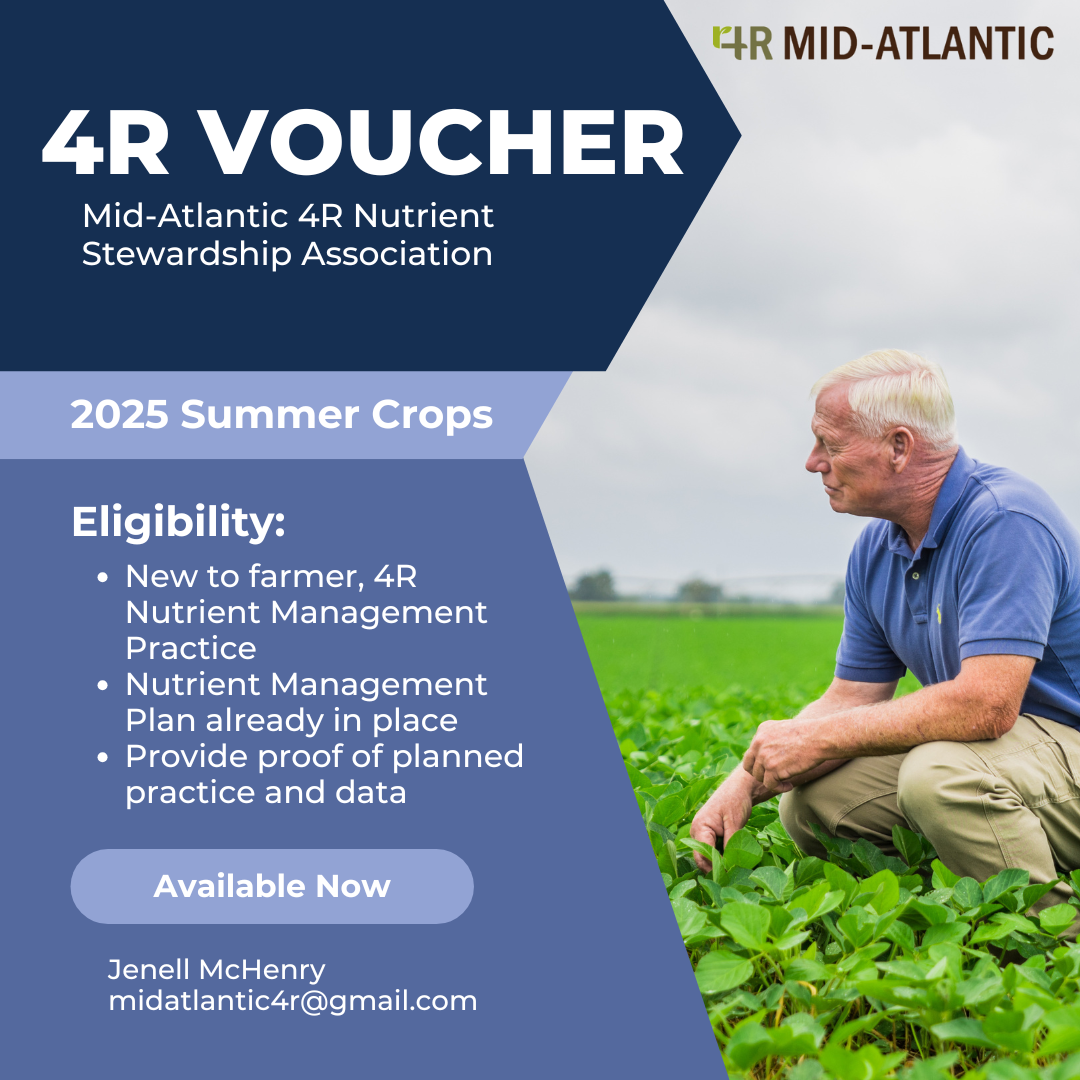Advanced Nutrient Management Vouchers Available
“Are you ready to take your farm to the next level for yield and efficiency?”
(Chester, Maryland, February 10, 2025) – For the 2025 growing season, farmers and trusted advisers in the Chesapeake Bay Watershed have the opportunity to work together and plan advanced nutrient management practices. A $1,000 planning voucher from the Mid-Atlantic Stewardship Association is available to support an advisor and farmer’s time to work together and develop next steps to meet their specific farm goals.
Vouchers are paid directly to the trusted advisor to assist a farmer with planning including data management and compilation, analysis of existing data, collecting new data/soil tests, etc. to plan next steps. Enrolled fields must have a current nutrient management plan or meet NRCS Core Nutrient Management requirements in Pennsylvania.
Example practices include nitrogen modeling, precision fertilizer recommendations, generating field zones, and data management to name a few. No implementation is required, only proof of your plan and a follow-up interview to share how the funds supported your goals.
There are 10 of 30 vouchers still available on a first-come, first-served basis and an additional two vouchers for historically underserved farmers valued at $1,250. Enrollment forms are due no later than March 14th for the 2025 growing season.
In 2024, we provided 30 vouchers with great success and funding from the Keith Campbell Foundation. You can hear from the 4R team and participating agribusiness about the vouchers here.
Learn more about this year’s programs online here.

